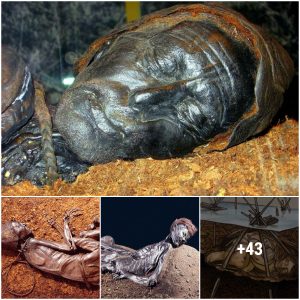Archaeologists have recently uncovered the remains of a man in iron chains from the Khirbat el-Masani archaeological site in northern Jerusalem. The remains are 1500-year-old and are those of a Byzantine monk.
Found at the Byzantine Ruins of Khirbat el-Masani
Khirbat el Masani is a ruin located on the West Bank. Previously, archaeologists from the Israel Antiquities Authority had uncovered a tri-apsidal Byzantine-era church at the site, Heritage Daily reports. The church was part of a monastery that also housed a rest house for travelling pilgrims.
Built of limestone ashlars—finely square-cut stone—the church is believed to have been dedicated to Saint Zachary by the priest Sabinus. St Zachary was the patron saint of peace and was known for building homes for the poor and travelers.
According to the Israel Antiquities Authority , the site was first surveyed in the Jerusalem Survey Map, and Dr Gaby Mazor an archaeologist with the authority conducted a small excavation. This revealed the front part of two of the apses of the church. It was followed by an extensive excavation carried out at the site in 2017, directed by Israel Antiquities Authority archaeologists Zubair Adoi and Kafir Arbiv and funded by Moriah Jerusalem Development Corporation. The 2017 dig uncovered a large complex which consisted of the monastery, rest house and inn. Archaeologists then studied the construction and plan of the architectural remains.
- A Millennium of Glory: The Rise and Fall of the Byzantine Empire
- The Third Siege of Rome: Byzantine Armies Battle the Ostrogoths

General view of the apses hewn in the rock, 2017. (S. Tarkhanova/ © The Hebrew University of Jerusalem )
Chained in Death as in Life
The chained human skeleton was discovered in a cist grave next to two small niche-like closed cells in the central apse of the church. He was chained with iron rings around his neck, hands and feet. He was probably a resident of the monastery who practiced extreme ascetism.
Ascetism as a way of life for attaining salvation or redemption from sin for self and others was greatly emphasized in traditional Christianity. It involved fasting and abstinence from sensual pleasure. The earliest Christian hermits and ascetics lived mostly in the desert of Scetes in Roman Egypt. They migrated there from cities to escape the pagan persecution of Christians. They came to be known as the Desert Fathers.
- Revealing the Recluse: The Sad and Secret Lives of Hermits
- Monks, Hermits and Ascetics: The History of Women in Desert Asceticism
In time, more extreme forms of ascetism developed in eastern Christianity, particularly in Syria around the fourth and fifth centuries AD, as recorded in historical sources. It included practices such as solitary confinement, chaining the body to a rock or inside a cell, subsisting only on grass, inflicting pain on one’s body, abandoning personal hygiene and voluntary suffering. There is archaeological evidence of the spread of these drastic practices of self-abnegation and self-punishment as far south at least as Jerusalem during Byzantine rule which lasted from 313 to 636 AD.
Christianity became widely practiced in ancient Israel during this time and churches were built in Jerusalem, Nazareth and Galilee. The territory was divided into three provinces: Palestina Prima, Palestina Secunda and Palestina Tertia, which were all part of the Diocese of the East.

It has been determined the chained person was a monk. ( IAA)
Chaining an Unusual Ascetic Practice in the Region
However, the discovery of chained human remains in the region is extremely unusual. An earlier such find was made by Israel Antiquities Authority archaeologist Elena Kogan-Zehavi in 1991 at Khirbat Tabaliya (Givat Ha-Matos), located between Jerusalem and Bethlehem.
The recent find is only the second discovery of chained skeletal remains around Jerusalem. This indicates that chaining as ascetic self-deprivation wasn’t widely practiced in the region.
Fasting and self-deprivation during the forty days of Lent in imitation of Christ’s fasting in the wilderness before he began his public ministry is still practiced in most denominations of Christianity. However, pursuit of spiritual purification and penance for the sins of self and humanity through such drastic measures as solitary confinement and self-scourging are difficult to fathom in the modern context. Perhaps modern science has dispelled the fear of hellfire and the material culture has made hedonistic pleasures more fashionable!
Top image: The remains of a Byzantine monk in chains being excavated in Khirbat el Masani, West Bank. Source: IAA
By Sahir Pandey





